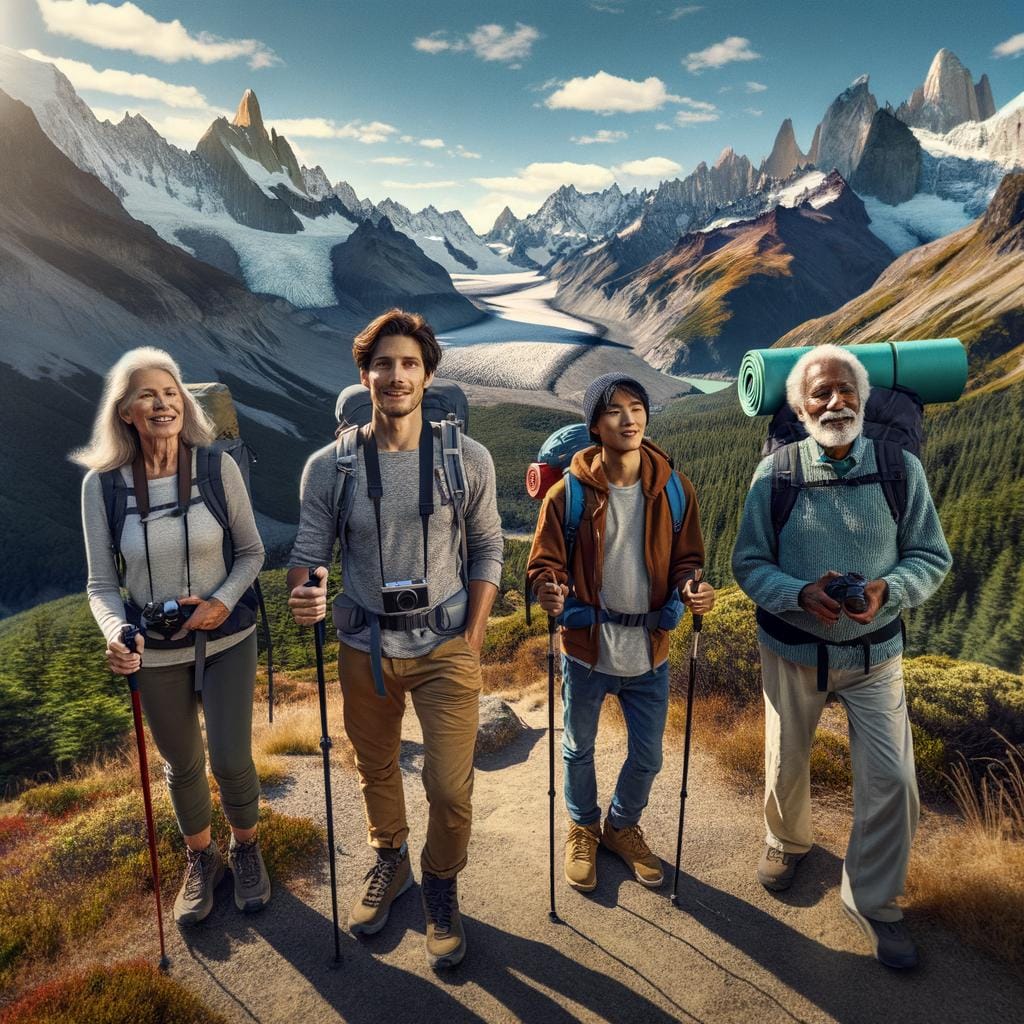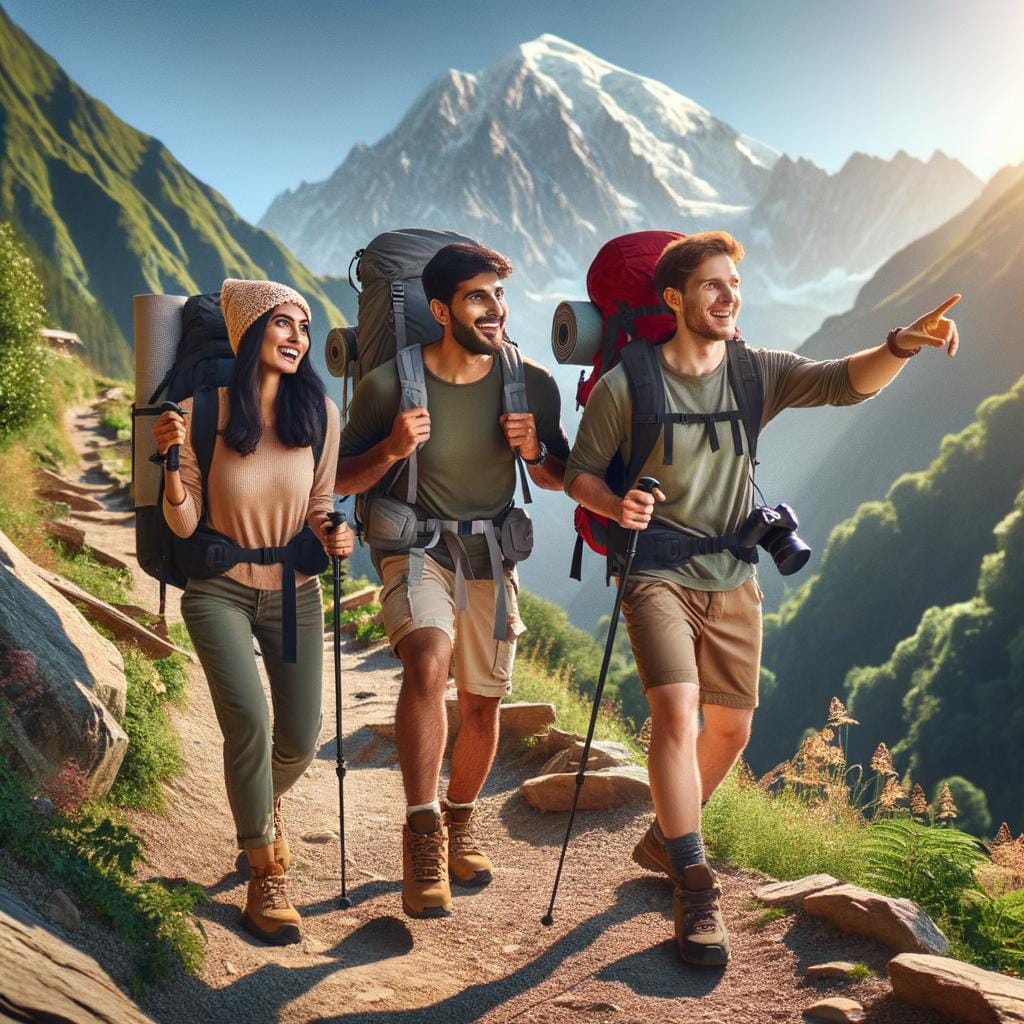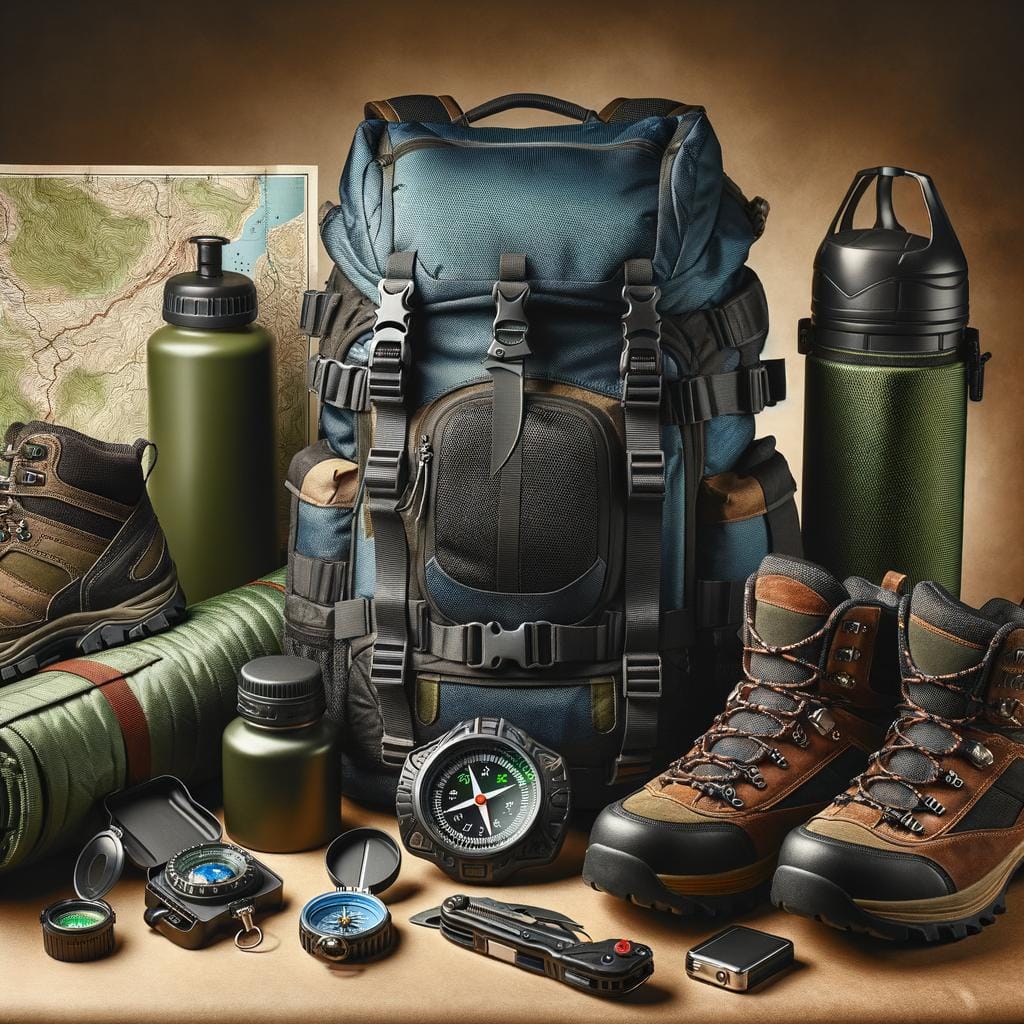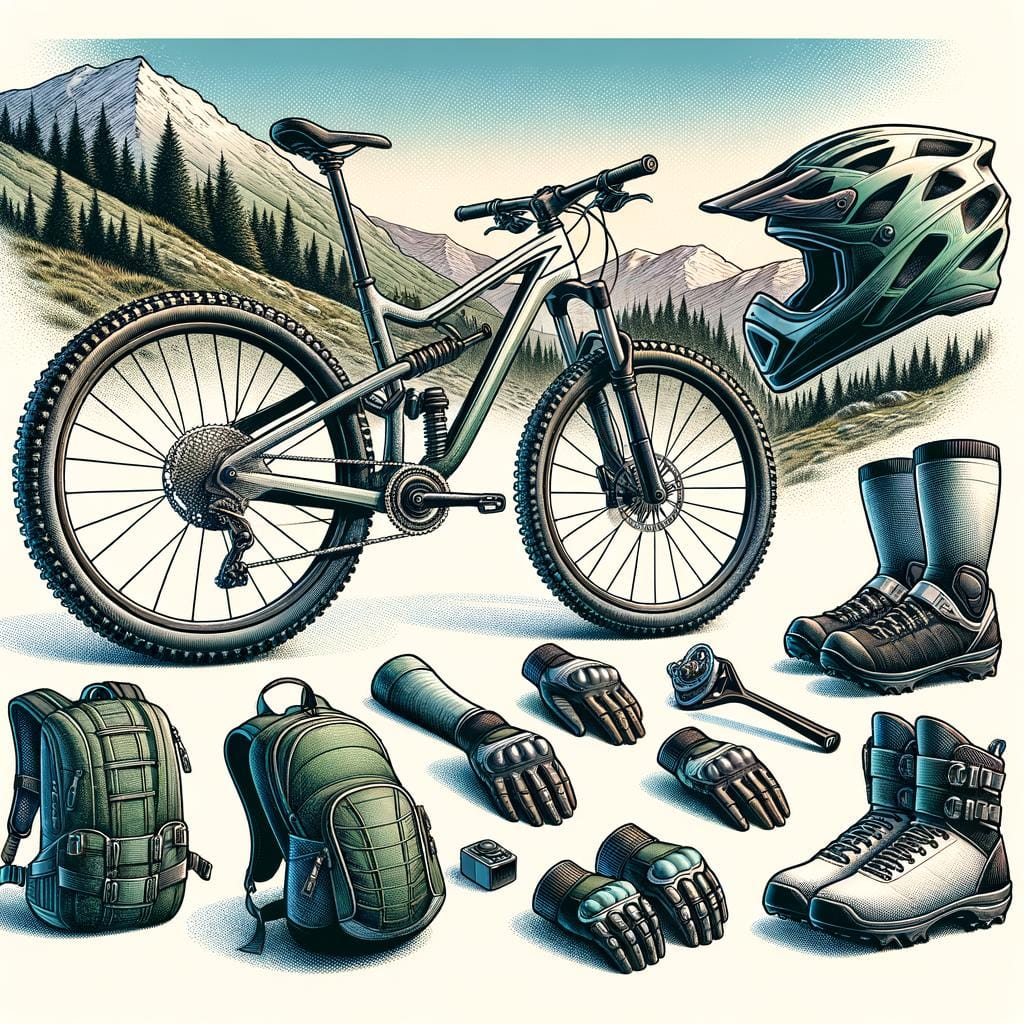Embarking on a mountain trekking adventure is not just a physical challenge, but a mental and emotional journey as well. The thrill of conquering steep inclines, reaching breathtaking peaks, and immersing oneself in the raw beauty of nature makes mountain trekking an exhilarating experience for many outdoor enthusiasts.
Whether you’re a seasoned hiker or a beginner looking to push your limits, mountain trekking offers a unique opportunity to test your skills and immerse yourself in the awe-inspiring wonders of the great outdoors.
One of the key attractions of mountain trekking is the sense of accomplishment that comes with scaling towering peaks and traversing rugged terrain. The physical exertion required to navigate challenging trails, combined with the stunning vistas that await at every turn, make each step towards the summit a rewarding experience. From snowy summits to lush forests and rocky deserts, mountain trekking allows adventurers to explore diverse landscapes and push themselves beyond their comfort zones.
As with any outdoor activity, proper preparation is essential when embarking on a mountain trekking expedition. From selecting the right gear to training physically and mentally for the journey ahead, there are several factors to consider before setting foot on the trail. In this article, we will explore what mountain trekking entails, why it captivates adventurers around the world, and how you can prepare yourself for an unforgettable exploration of some of nature’s most majestic landscapes.
Essential Gear for Mountain Trekking
Mountain trekking is an exhilarating outdoor activity that allows enthusiasts to challenge themselves physically and mentally while immersing themselves in the breathtaking beauty of nature. However, to fully enjoy and safely navigate through mountainous terrain, it is essential to have the right gear. From sturdy hiking boots to weather-appropriate clothing, here are some key essentials you should have when preparing for a mountain trekking adventure.
Sturdy Hiking Boots
One of the most important pieces of gear for mountain trekking is a good pair of hiking boots. The terrain can be rugged and uneven, so having sturdy boots with good ankle support and traction is crucial. Make sure your boots are broken in before your trek to avoid blisters or discomfort during your journey.
Weather-Appropriate Clothing
When venturing into the mountains, weather conditions can change rapidly. It is important to dress in layers that can be easily adjusted as needed. Waterproof and breathable clothing is ideal to protect yourself from rain or snow while keeping you comfortable as you exert yourself during the trek. Additionally, wearing moisture-wicking base layers can help regulate body temperature and keep you dry throughout your hike.
Navigation Tools and Backpack
Carrying navigation tools such as a map, compass, or GPS device is crucial for staying on course in mountainous terrain where trails may not always be well-marked. A sturdy backpack with ample capacity to carry essentials like water, snacks, first aid supplies, extra clothing layers, and emergency equipment should also be part of your gear checklist for mountain trekking.
By ensuring that you have the proper gear for mountain trekking, you can enhance your overall experience while staying safe and prepared for any challenges that may arise along the way. Remember that being well-equipped will not only make your adventure more enjoyable but also contribute to a successful and fulfilling mountain trekking experience.
Choosing the Right Mountain Trekking Destination
When it comes to choosing the right mountain trekking destination, there are several factors to consider in order to make the most of your adventure. One of the key considerations is the difficulty level of the trek.
Different mountains offer varying levels of challenge, from beginner-friendly trails to more advanced routes that require a higher level of experience and physical fitness. It’s important to accurately assess your own abilities and choose a trek that aligns with your skill level to ensure a safe and enjoyable experience.
Scenic Views and Natural Beauty
Another important factor to consider when selecting a mountain trekking destination is the stunning views and natural beauty that you will encounter along the way. Whether you’re looking for panoramic vistas, lush forests, or breathtaking waterfalls, each mountain has its own unique charm and attractions. Research different destinations to find out what kind of scenery they offer, and choose one that aligns with your preferences and interests.
Weather Conditions and Seasonality
It’s also essential to take into account the weather conditions and seasonality of your chosen mountain trekking destination. Weather can be highly unpredictable in mountainous regions, with conditions changing rapidly from sunny skies to sudden storms. Make sure to check weather forecasts beforehand and pack appropriate gear for varying conditions.
Additionally, consider the best time of year to visit certain mountains based on factors such as snowfall, temperature, accessibility, and crowd levels. By carefully considering these factors, you can select a mountain trekking destination that suits your preferences and ensures a memorable experience.
Safety Tips for Mountain Trekking
Mountain trekking is an exhilarating experience that allows adventurers to immerse themselves in the stunning beauty of nature while challenging their physical and mental limits. However, venturing into mountain terrain comes with its own set of risks and challenges. To ensure a safe and enjoyable trekking experience, it is crucial to be well-prepared and knowledgeable about safety practices in unpredictable mountain environments.
Here are some essential safety tips for mountain trekking:
- Research the trail: Before embarking on a mountain trekking adventure, take the time to research the trail you will be hiking. Familiarize yourself with the terrain, weather conditions, and any potential hazards you may encounter along the way.
- Check the weather forecast: Mountain weather can change rapidly, so it is important to check the weather forecast before heading out. Be prepared for sudden storms or extreme temperature changes by dressing in layers and carrying appropriate gear.
- Travel in a group: It is always safer to hike in a group rather than alone. Make sure to inform someone of your planned route and expected return time. In case of an emergency, having companions with you can make all the difference.
In addition to these tips, it is essential to pack essential gear such as navigation tools, first aid supplies, plenty of water, high-energy snacks, and a fully charged cell phone. Proper preparation and awareness of your surroundings are key to staying safe during mountain trekking expeditions. By following these safety guidelines and being mindful of the environment around you, you can enjoy all that mountain trekking has to offer without compromising your well-being.
Physical Preparation for Mountain Trekking
Mountain trekking is an exhilarating and challenging adventure that offers stunning views and a sense of accomplishment upon reaching the summit. However, in order to fully enjoy this experience, it is essential to physically prepare yourself for the demanding nature of mountain trekking. Training your body beforehand can significantly improve your performance on the trails and reduce the risk of injuries. Here are some training tips to ensure you’re ready for the challenge:
- Build Endurance: Mountain trekking can involve long hours of continuous hiking with steep inclines and varying terrain. To build endurance, incorporate activities such as jogging, cycling, or stair climbing into your regular exercise routine. Gradually increase the intensity and duration of your workouts to mimic the demands of mountain trekking.
- Strength Training: Strengthening your muscles, especially those in your legs, core, and back, is crucial for mountain trekking. Incorporate exercises like squats, lunges, deadlifts, and planks into your routine to improve stability and prevent fatigue during long hikes. Resistance training with weights or resistance bands can also help build strength.
- Practice Hiking: One of the best ways to prepare for mountain trekking is by practicing hiking on local trails with similar elevation gains. Start with shorter hikes and gradually increase the distance and difficulty level as you progress. This will not only help condition your body but also familiarize you with hiking gear and proper footwork on different terrains.
It’s important to listen to your body during training and rest when needed to prevent overtraining injuries. Stay hydrated, eat a balanced diet rich in nutrients, and get an adequate amount of sleep to support your physical preparation for mountain trekking. By following these training tips and gradually increasing your fitness level, you’ll be better equipped to tackle challenging mountain trails and fully enjoy the stunning landscapes that await you.
Mental Preparation for Mountain Trekking
Mountain trekking is a physically demanding activity that requires not only physical but also mental strength. To successfully conquer long treks and challenging terrains, it is essential to be mentally prepared. One technique to stay focused during mountain trekking is mindfulness.
By being fully present in the moment, focusing on your breathing, and observing your surroundings without judgment, you can stay grounded and centered even when facing obstacles along the trail. Additionally, practicing meditation before embarking on a mountain trek can help calm your mind and reduce anxiety.
Visualization is another powerful tool for staying motivated during long treks. Before starting your journey, take some time to visualize yourself reaching the summit or completing the trek. Imagine how you will feel when you achieve your goal and use this positive imagery to propel yourself forward when the going gets tough. Setting small milestones along the way and celebrating each achievement can also help boost your morale and keep you motivated throughout the trek.
Lastly, building a strong support system with fellow mountain trekkers can provide motivation and encouragement during challenging moments. Sharing experiences, cheering each other on, and helping one another navigate difficult sections of the trail can make the journey more enjoyable and rewarding. Remember that mountain trekking is not just about reaching the summit but also about enjoying the process and growing both physically and mentally along the way.
| Mental Preparation Techniques | Benefits |
|---|---|
| Mindfulness | Stay grounded and centered during obstacles |
| Visualization | Stay motivated by imagining reaching goals |
| Building a Support System | Encouragement and motivation from fellow trekkers |
Best Practices for Leave No Trace Mountain Trekking
Mountain trekking offers a unique opportunity to connect with nature and challenge oneself in breathtaking landscapes. However, as the popularity of mountain trekking increases, so does the impact on the environment. It is essential for trekkers to practice leave no trace principles to minimize their footprint on these delicate ecosystems. Leave no trace refers to the concept of leaving nature undisturbed and preserving its pristine beauty for future generations of mountain enthusiasts.
One crucial practice for leave no trace mountain trekking is to pack out all trash and litter. This includes not only your own waste but any garbage you may come across during your trek. Carrying a small trash bag with you can make it easier to collect and properly dispose of any rubbish you encounter along the trail. Additionally, avoiding single-use plastics and opting for reusable containers can help reduce waste generation while hiking.
Another key principle of leave no trace mountain trekking is to stay on designated trails. Straying off the established path can lead to soil erosion, trampling of vegetation, and disturbance of wildlife habitats. By sticking to marked trails, you help protect fragile ecosystems and minimize human impact on the surrounding environment. It’s important to remember that even small actions like stepping off-trail or cutting switchbacks can have long-lasting consequences on mountain environments.
In addition to packing out trash and staying on designated trails, minimizing campfire impacts is another essential aspect of leave no trace mountain trekking. When building a campfire in mountainous regions, it’s vital to follow local regulations, use existing fire rings if available, and always fully extinguish fires before leaving your campsite. Choosing lightweight camping stoves over open fires can also help reduce damage to vegetation and prevent wildfires in dry mountain conditions.
| Leave No Trace Practices | How to Implement |
|---|---|
| Pack out trash | Carry a small trash bag and collect all litter found along the trail |
| Stay on designated trails | Avoid straying off marked paths to protect fragile ecosystems |
| Minimize campfire impacts | Follow local regulations when building fires and always fully extinguish them before leaving |
The Rewards of Mountain Trekking
Mountain trekking is not just a physical challenge, but also an incredibly rewarding experience that can lead to personal growth and unforgettable memories. The sense of accomplishment and fulfillment that comes with conquering mountain peaks is incomparable, making all the hard work and effort worthwhile. Each summit reached represents a triumph over one’s own limitations and a testament to the resilience of the human spirit.
Sharing stories and experiences from mountain trekking adventures can inspire others to seek out their own outdoor challenges and push themselves beyond their comfort zones. These personal narratives showcase the beauty of nature, the camaraderie among fellow trekkers, and the sheer joy of standing on top of the world.
Whether it’s witnessing a breathtaking sunrise from a mountain peak or celebrating a successful expedition with newfound friends, these moments create lasting memories that stay with us long after we descend back to reality.
As you embark on your own mountain trekking journey, remember that each step taken towards reaching that summit is not just about conquering the peak itself, but also about discovering more about yourself and your capabilities. The rewards of mountain trekking extend far beyond the physical act of climbing – it’s about immersing yourself in nature, challenging your limits, and finding a profound connection with the natural world.
So lace up your hiking boots, pack your essentials, and set out on an adventure that will not only test your strength and endurance but also leave you with an indelible sense of achievement and wonder.
Frequently Asked Questions
What Is Mountain Trekking?
Mountain trekking, also known as mountain hiking, is a challenging outdoor activity that involves walking or hiking over rough terrain and various elevations in mountainous regions. It requires physical fitness, proper gear, and endurance to successfully navigate through the rugged natural landscapes.
What Is Difference Between Trekking and Hiking?
The main difference between trekking and hiking lies in the intensity and duration of the activity. Trekking typically refers to longer, multi-day journeys through remote areas with varying terrains and altitudes. Hiking, on the other hand, usually involves shorter day trips on well-maintained trails with less rugged conditions.
What Is the Difference Between Mountain Climbing and Trekking?
Mountain climbing is a more technical and demanding pursuit compared to trekking. Climbing mountains often involve using specialized equipment like ropes, harnesses, and crampons to ascend steep cliffs or icy slopes.
In contrast, trekking focuses more on long-distance exploration of mountainous regions without requiring advanced climbing skills or equipment. Trekking emphasizes endurance, while mountain climbing relies heavily on technical expertise and safety protocols.

An avid outdoor enthusiast, writer, and environmental advocate who has spent over two decades exploring the world’s most breathtaking landscapes. With a background in environmental science and a passion for adventure, Frances combines her love for nature with her talent for storytelling to inspire others to embark on their own outdoor journeys.





